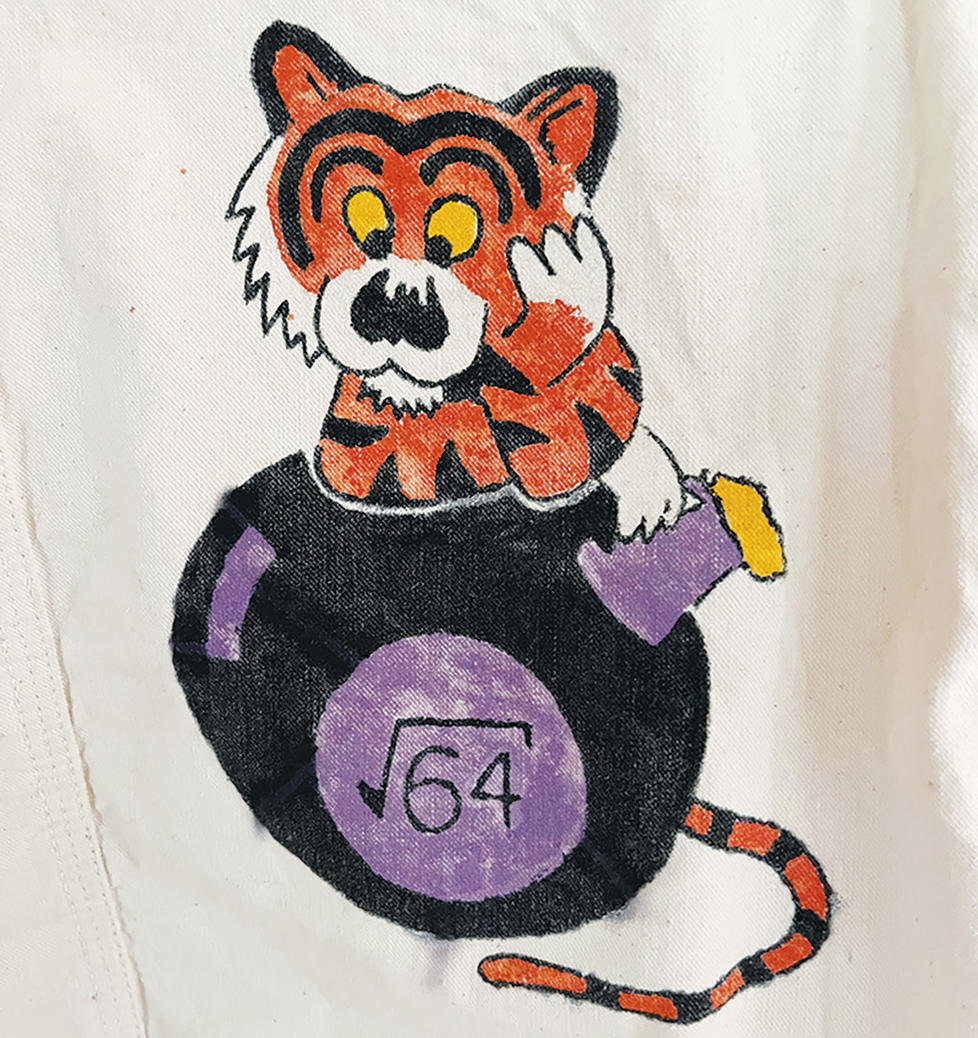‘Despondent Tiger’ Logo Captured the Class of 1964
Graduation isn’t always a happy affair. Ask the mascot for the Class of 1964, a little tiger who, after drinking or spilling some beer, leans against an eight ball, like he’s leaning against the bar after having one too many, and rests his head on his paw with a contemplative expression. People often call him “despondent” and ask Princeton alums who wear his image on a necktie or jacket what’s troubling him.
The forlorn feline became the class mascot in the spring of 1963, when the senior class selected it as the logo design for the class’s beer jackets. (The artist, Thomas Lee ’64, won a free jacket and $25.) Many of the finalists for the design reflected the anxieties of the Cold War: One depicted a tiger dressed as Fidel Castro; another, a tiger watching in dismay as a nuclear bomb blows up the globe. The winning logo caught the class spirit precisely with its uncertainty, according to Peter Janos Kurz ’64, a longtime admirer of the design.
“The logo captured a great deal — the symbolic possibility of what was going on through a lot of minds among the 700 seniors, all male, about to graduate from Princeton,” Kurz says. “Why despondent? Why not joyful, proud, relieved? Today, it’s even more difficult to explain, because not every member of the senior class has a mandatory draft card.”
Many of the finalists for the design reflected the anxieties of the Cold War: One depicted a tiger dressed as Fidel Castro; another, a tiger watching in dismay as a nuclear bomb blows up the globe.
For the young men who were moving on from campus into the wider world during the Vietnam War, leaving their studies meant leaving their safety. “A number of young men went to Canada to avoid serving. They were vilified,” Lee, the creator of the logo, writes in an email.
And so — a despondent tiger, or at best, a boozily reflective one, wondering how his bright college years could be ending under such a cloud. An eight ball, a symbol of bad luck. (The logo replaces the number eight on the ball with the square root of 64, suggesting that the class was born under a bad omen.)
But things got better for the Class of 1964. Oh, it took time: They witnessed war, protests, the good trouble of the Civil Rights Movement, recessions, oil crises, the AIDS epidemic. But as they made their way through their portion of history, as they saw both suffering and overcoming, as they moved into a world that they themselves had helped to change, they came to feel more in control of their lives. In 2019, for the class’s 55th reunion, they got a new version of the logo for their Reunions jackets — this time with the poor little tiger, happy at last, driving a convertible with a wide smile on his face, together with the slogan, “55 is not our limit.”
“Now, as I think about it, he’s no longer despondent,” Kurz says. “He’s jubilant.”
Lee wound up doing his stint in the war in the Navy, where he served as an officer on a Supply Corps ship. “We made trips to Vietnam, but we didn’t have to fight there,” he writes.
“I always called the tiger ‘Henry,’ but no one else ever knew,” he adds. “Now you do.”
Elyse Graham ’07 is a professor at Stony Brook University.












No responses yet